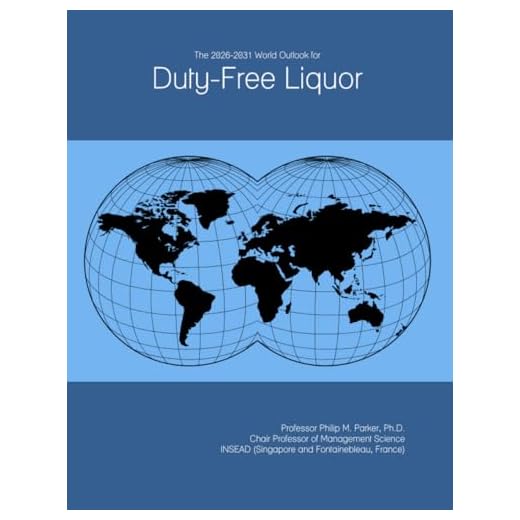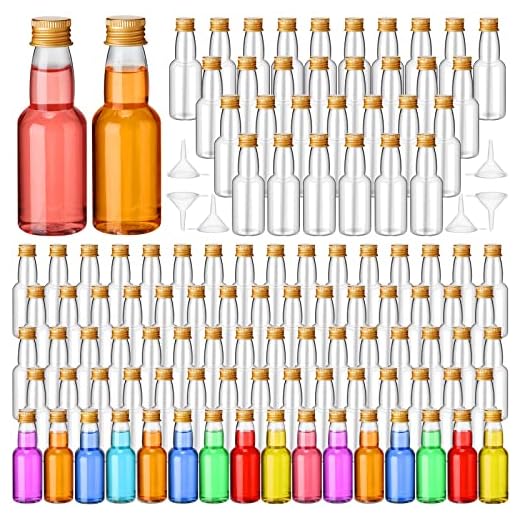






Small bottles of alcoholic beverages can be stored in personal bags, provided they comply with specified size restrictions. Generally, containers must not exceed 3.4 ounces (100 milliliters) each and must fit within a quart-sized, clear, resealable plastic bag. Aim to include only one such bag per passenger.
Ensure that these containers are sealed and undamaged to meet security protocols. It is advisable to inspect local regulations regarding the transport of alcohol, as some destinations have strict laws governing its importation, regardless of quantity.
For those traveling by air, packing small alcohol bottles in checked bags is typically permissible without size restrictions. However, be cautious of limits set by airlines on the total alcohol volume that can be transported. Check with your airline for specific policies to avoid unexpected issues at the airport.
Regulations for Small Alcohol Bottles in Travel Bags
Small containers of alcohol, typically up to 3.4 ounces (100 milliliters), can often fit the requirements set by transportation authorities for personal items. Ensure that these mini bottles are packed in a resealable plastic bag, alongside other liquids, gels, and aerosols, adhering to the one-quart limit.
Security Checkpoints Guidelines
During the security screening process, these small alcohol bottles must be presented separately. Be aware that in some regions, you may be asked to consume or dispose of these items before boarding if regulations are strict. Always check the specific policies of the airline and the destination country regarding alcohol.
International Travel Considerations
For international flights, customs regulations often come into play. Different countries have varying limits on the amount of alcohol that may be brought in duty-free. Familiarize yourself with these rules to avoid unexpected issues upon arrival.
Understanding TSA Regulations for Liquids
To comply with TSA guidelines, liquids in your possessions must be limited to containers of 3.4 ounces (100 milliliters) or smaller. These are permitted in a single quart-sized clear, resealable bag. Each traveler can bring only one such bag. Ensure that your items are easily accessible for inspection at security checkpoints.
Exceptions and Special Considerations
There are exceptions for certain items, such as medications, baby formula, and breast milk, which can exceed the standard liquid restrictions. Always declare these items at security screening. It’s advisable to familiarize yourself with specific state regulations as well, especially relating to various products you might want to transport.
For those interested in travel convenience, investing in a best heavy duty deck umbrella or a best backpack for nurses can enhance your travel experience. Additionally, if traveling with pets, it’s helpful to learn how to cover holes in fence for dogs to ensure their safety while you are away.
Specific Rules for Alcoholic Beverages in Carry-Ons
Liquids exceeding 3.4 ounces (100 milliliters) are prohibited in the onboard bags. For alcoholic drinks, containers must not surpass this limit. It is feasible to transport smaller bottles, typically known as “miniatures,” as allowed. However, each passenger may bring a maximum of five such containers per trip.
Additionally, any alcohol with an alcohol content over 70% (140 proof) is strictly forbidden in personal items. Containers should be securely packed to avoid breakage and leakage during travel. Many airlines mandate that any alcoholic beverages purchased at duty-free shops be sealed and accompanied by proof of purchase.
It’s advisable to check individual airline policies regarding transporting beverages, as some may impose additional restrictions. Always verify the regulations to ensure compliance with storage and quantity limitations before departing.
Packaging Requirements for Nips in Flight
For traveling with small bottles of spirits, strict packaging guidelines must be followed to ensure smooth security checks and compliance with airline rules.
Container Specifications
- Each vessel should not exceed 3.4 ounces (100 milliliters) in capacity.
- All bottles must be sealed and intact without any leaks.
- Ensure that the total volume of liquid fits within a single quart-sized clear plastic bag.
Bagging Guidelines
- Use a resealable zip-top bag for easier screening.
- Only one quart-sized bag is permitted per passenger.
- Present the bag separately during security screening for a more efficient process.
Compliance with these specific packaging requirements not only facilitates the security process but also enhances the overall travel experience. Ensure to adhere to these guidelines to avoid any potential confiscation of your items.
What to Do if Your Nips Are Confiscated
If your mini bottles are taken by security, first remain calm. It’s essential to understand that such actions are standard procedure under transportation regulations. Approach the security personnel politely to inquire about the specific reasons for the confiscation.
If your items were discarded due to size or volume restrictions, consider asking if there is an option to check them in instead. Documenting the occurrence, including taking notes on what was taken, can be helpful for any follow-up or claims with the airline.
If you had a significant amount of alcohol or a special brand, you might want to reach out to the retailer post-travel for information regarding their policies on claims or refunds for lost items. Be prepared to provide evidence of your purchase, such as a receipt or photos of the product.
As a precaution for future travels, consider researching the latest guidelines from each airline regarding liquid restrictions. This knowledge helps avoid future problems and ensures compliance with regulations.
Lastly, plan ahead for alternatives. Buying alcohol at your destination can be a suitable solution, or exploring local options upon arrival can lead to new discoveries without the hassle of transporting it through security.
FAQ:
Are nips allowed in carry-on luggage on flights?
When it comes to carrying nips, or small bottles of alcohol, in your carry-on luggage, the regulations are typically set by the Transportation Security Administration (TSA) in the United States, or similar agencies in other countries. Most airlines allow passengers to bring a reasonable amount of liquid, such as nips, as long as they comply with the standard liquid regulations. This means each bottle should be 3.4 ounces (100 milliliters) or smaller and should fit into a quart-sized resealable bag along with other liquids. However, it’s advisable to check the specific rules of the airline and the country you are flying to, as regulations can vary. In many cases, you can also purchase alcoholic beverages after the security checkpoint and bring them aboard your flight.
Can I bring nips in my checked luggage as well?
Yes, you can generally bring nips in your checked luggage. While the TSA doesn’t impose any specific limits on the amount of alcohol you can pack in checked bags, it’s important to note that individual airlines may have their own restrictions. Typically, the alcohol content should not exceed 70% (140 proof) if you’re packing large quantities. If you’re traveling internationally, be aware of customs regulations regarding the importation of alcohol into the destination country, as there may be limits on how much you can bring without incurring additional taxes or duties. Always check airline policies and the regulations of your destination before your trip.
Are there age restrictions for bringing nips on a flight?
Yes, age restrictions apply when bringing nips or any type of alcohol onto a flight. You must be of legal drinking age in both the departure and arrival locations to bring alcohol with you. In the United States, for instance, the legal drinking age is 21. If you’re carrying nips in your carry-on luggage, the flight attendants may ask for proof of age before allowing you to consume them on board. Additionally, if you’re purchasing alcohol at the airport, ensure you have acceptable identification. It’s always a good idea to familiarize yourself with the local laws and airline policies related to age restrictions to avoid any issues during your travel.







